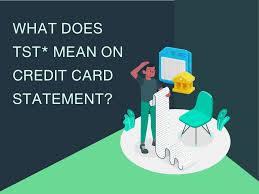Small businesses are the backbone of our economy, but their growth and success can be hindered by a lack of financial resources. However, there’s good news on the horizon: the Payroll Tax Credit is here to level the playing field! This game-changing credit offers small business owners an opportunity to increase cash flow and invest in their company’s future. In this blog post, we’ll delve into what exactly this tax credit entails and how it can benefit your business. So sit back, relax, and get ready to learn why the Payroll Tax Credit is a must-know for any savvy entrepreneur!
Introduction to the Payroll Tax Credit
The Payroll Tax Credit is a refundable tax credit that is available to small businesses that are experiencing financial hardship due to the COVID-19 pandemic. The credit is equal to the amount of payroll taxes that the business would have otherwise been required to pay, and it can be used to offset other expenses such as rent, utilities, and employee salaries.
The Payroll Tax Credit is a significant financial relief measure for small businesses that are struggling to keep their doors open during the pandemic. For many businesses, the credit will mean the difference between being able to survive the crisis and having to close their doors permanently.
If you are a small business owner who is facing financial difficulties due to the pandemic, be sure to check if you are eligible for the Payroll Tax Credit. It could be just what you need to get through this tough time.
How it Helps Small Businesses
The Payroll Tax Credit is a refundable tax credit available to eligible small businesses. The credit is equal to the amount of payroll taxes paid by the business, up to a maximum credit of $5,000.
The Payroll Tax Credit is a valuable tax break for small businesses, as it can significantly reduce the amount of taxes owed. This can free up much-needed cash flow for businesses, which can be used to invest in growth and create new jobs. In addition, the credit can be claimed retroactively for any eligible payroll taxes paid in 2018. This means that businesses that have already filed their taxes can claim the credit on their 2018 return.
What Qualifies a Business for the Credit?
To qualify for the payroll tax credit, businesses must have experienced a significant decrease in gross receipts. Gross receipts are defined as the total amounts received from all sources before any deductions. This includes sales, returns and allowances, gross income from services, and other operating revenue. Businesses that have not been in operation for the entire year can still qualify if they can demonstrate a significant decline in gross receipts during any quarter of 2020 compared to the same quarter in 2019.
Who is Eligible for the Credit?
To be eligible for the payroll tax credit, businesses must have experienced a decline in revenue of at least 50% when compared to the same quarter in the prior year. The credit is available for the first two quarters of 2020 and can be applied to payroll taxes incurred during that time period.
Businesses that are eligible for the payroll tax credit will receive a refundable credit against their quarterly payroll tax liability. The credit is equal to 50% of eligible wages paid by the employer during the covered quarter, up to a maximum of $5,000 per employee.
How to Claim the Credit
To claim the payroll tax credit, businesses will need to file a Form 941 for each quarter in which they want to claim the credit. They will also need to include Schedule R with their Form 941. Businesses can find more information on how to claim the credit on the IRS website.
Benefits of the Payroll Tax Credit for Small Businesses
The Payroll Tax Credit is a refundable tax credit for employers that is equal to the payroll taxes paid by the employer on behalf of their employees. This credit is available to small businesses with less than $5 million in annual payroll expenses.
The Payroll Tax Credit is a significant benefit for small businesses because it reduces the cost of doing business and helps to level the playing field between small businesses and large businesses. This credit also helps to encourage job creation and retention by making it more affordable for small businesses to hire and retain employees.
In addition, the Payroll Tax Credit is also beneficial for employees of small businesses because it reduces the amount of payroll taxes that they are responsible for paying. This can lead to an increase in take-home pay, which can help to improve employee morale and retention.
Tips for Maximizing Benefit from the Payroll Tax Credit
The Payroll Tax Credit is a game-changer for small businesses because it offers a way to reduce your payroll taxes. Here are some tips for maximizing the benefit of the credit:
1. Make sure you’re eligible. To be eligible for the credit, your business must have less than $5 million in annual revenue and fewer than 500 employees.
2. Calculate your credit amount. The amount of the credit is equal to 6.2% of your eligible payroll costs, up to a maximum of $5,000 per employee.
3. Apply the credit to your payroll taxes. You can apply the credit against your Social Security and Medicare taxes, as well as any state or local payroll taxes that you pay.
4. Claim the credit on your tax return. Be sure to claim the credit on your tax return so that you can receive the benefit when you file your taxes.
By following these tips, you can maximize the benefit of the Payroll Tax Credit and reduce your overall tax burden. If you are interested to learn more about ERTC, check out the website.
Conclusion
The Payroll Tax Credit is a great way for small businesses to get some relief from the financial strain of tax payments. It’s easy to apply and can provide substantial savings on taxes, giving entrepreneurs more breathing space to focus on growth and success. On top of this, it will also help stimulate economic activity by allowing businesses to keep more capital in their operations. Overall, the Payroll Tax Credit is certainly a game-changer for small businesses and one that should be taken advantage of if possible.





